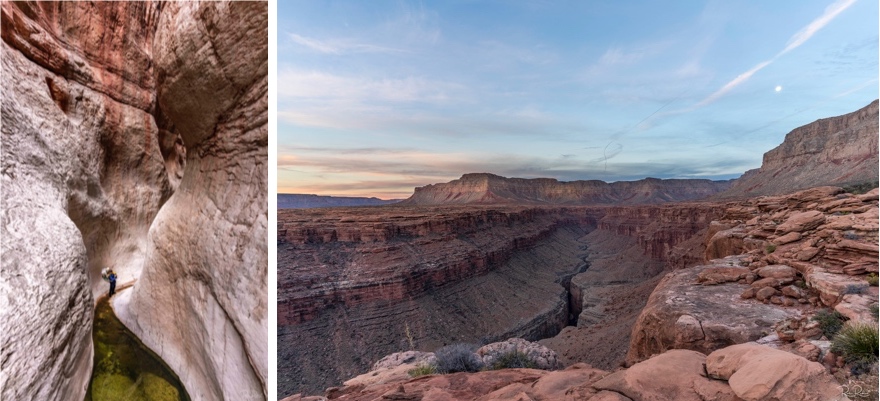The Coalition of American Canyoneers is filing these organizational comments with the National Park Service and the US Forest Service regarding the use of fixed anchors in Wilderness. Numbers matter and your comments can be vital to help us change these misguided policies.
Coalition of American Canyoneers Comments to the National Park Service
Coalition of American Canyoneers Comments to the U.S. Forest Service
What can you do to impact this misguided policy?
The USFS and the NPS are seeking comments on their fixed anchor plan. Comments must be made by 11:59 pm Mountain Time on January 30, 2024. Please use the CAC comments as a guide and post your own comments here:
National Park Service (NPS)
U.S. Forest Service (USFS)
The most effective comments are a personal story where the new policy would block access to your favorite canyon. Is there a canyon you’ve done where a fixed anchor was necessary for safety? Or where you suddenly had to place a fixed anchor because you discovered that no other anchor options existed? Or a situation where a fixed anchor reduced environmental impacts? If bolts and webbing were banned in Wilderness would your favorite canyon still be accessible?
BACKGROUND: The National Park Service (NPS) and the U.S. Forest Service (USFS) have decided that the 1964 Wilderness Act should be reinterpreted to disallow fixed anchors in Wilderness. With this reinterpretation, the Wilderness Act must be followed to legitimately install fixed anchors. While “climbing” is explicitly allowed (defined as climbing, canyoneering, etc.), this process is extensive and bureaucratic, requiring the land manager to do a Minimum Requirements Analysis (MRA) to analyze whether every fixed anchor installation (both existing and future) is required to meet the Wilderness definition in the Act. This becomes a very subjective effort that can be used to justify any outcome the land manger wants. At a time when our parks, monuments, and forests are chronically underfunded, the idea that resources will be available to analyze and study every bolt in canyons is nonsensical. A likely result could eventually be the closure of areas where fixed anchors are necessary for canyon descents.
Unfortunately, we’ve already seen land managers adopt this interpretation resulting in closures. More than a decade ago, North Cascades National Park (NOCA) instituted a bolt prohibition in both Wilderness and non-wilderness areas of the park. While the prohibition has been lifted for certain climbing areas, it remains in place for all canyons. North Cascades canyons are class C and fixed anchors are necessary for safe descents. This re-interpretation from the National Park Service will empower NOCA and other parks to retain these types of harmful restrictions on bolts. Places with historically bolted routes, like Zion National Park, are at risk under this new rule. Will those routes pass a Minimum Requirements Analysis (MRA)? If the MRA can’t be funded, or it’s funded and doesn’t pass, those routes could be closed. Red Rock Canyon National Conservation Area, Death Valley National Park, and Lake Mead National Recreation Area all have enacted recent bolt bans.
While the canyoning community prides itself in the use of natural anchors, and tremendous progress has been made in the art of ghosting canyons, the reality is that fixed anchors are required to descend many technical canyons to ensure safety or to manage environmental impacts, like rope grooves. If one fixed anchor is denied an entire canyon could be inaccessible. Furthermore, the fixed anchor definition includes anything left behind, such as webbing and slings, traditional climbing protection, pitons, ice screws, etc. If this rigorous definition of fixed anchors is used most canyons in Wilderness could be inaccessible to canyoneering.
Opinions of how, when, and where fixed anchors should be implemented in canyons varies widely amongst American canyoneers. Nonetheless, these new directives would make it absolute that these ”installations” are not permitted in all US Wilderness Areas. This will create tension between land managers and canyoneers. As a result, land managers will have a precedent to limit access or close some of the most enjoyable canyons in the Country. Regardless of whether you like or dislike bolts in canyons, this issue is more about our access than the anchors themselves.
Thank you for weighing in on this misguided effort.
Our future access could well depend on it.

